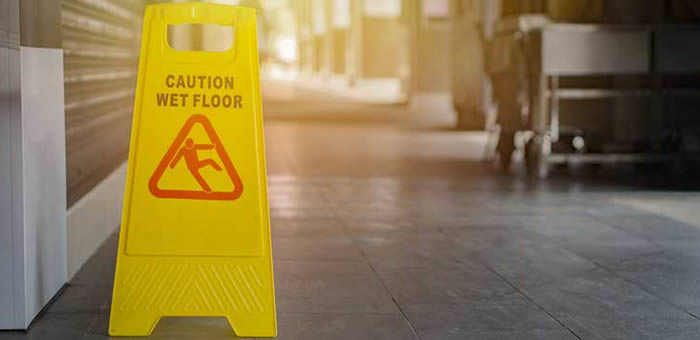What are Common Defenses Used in Slip and Fall Cases?

Slip and fall injuries can happen in public or private locales. Now we have to see how many slip and fall cases go to trial and plaintiffs making personal injury claims face common defenses used by defendants. The injured party must demonstrate that the property owner was aware of the hazard. Or they should have known about it. Many factors go into a judge’s decision. It’s including if the owner took appropriate steps to protect others from harm, the property’s condition, the likeliness of an accident, and if an employee caused the problem. The following are commonly used defenses one may find in a slip and fall case.
Reasonable Steps
Defendants usually claim that they took reasonable steps to avoid potential accidents, so plaintiffs will have to prove otherwise. There are accepted standards of care that may apply. For example, a grease spill on a restaurant floor might require some time before it can be cleaned up. The owners will need to explain how long a hazard was present and how quickly it could be realistically attended to. Certain times of day, such as a lunchtime rush, can change the timing on this. Also, the court will consider if there was an underlying problem that the owner was aware of; simply placing a warning sign nearby and not making repairs can create unsafe situations.
Plaintiff Negligence
In slip and fall claims, defendants and plaintiffs may share responsibility for the accident. Referred to as comparative or contributory negligence, plaintiffs may be found partially to blame for not following signs or looking where they were going. Defendants can use the plain view doctrine in these cases. Injured parties can end up recovering less if the court decides that they were partly to blame.
Open and Obvious Defense
Some dangerous scenarios present options for those encountering them, such as walking around a hazard or going another way, while others do not, or the person may not have known the danger was avoidable and how many slip and fall cases go to trial. An open and obvious defense focuses on whether the danger should have been obvious to a reasonable person. It shifts the responsibility to the plaintiff based on their own duty of care to stay away from open and obvious hazards on the property.
Though some slip and fall cases may be easier to prove, including those on properties with building code violations, many are more difficult and complex. Therefore, it is important to have a qualified slip and fall lawyer that understands these common defenses. And the lawyer also knows how to represent clients in the best way possible.
